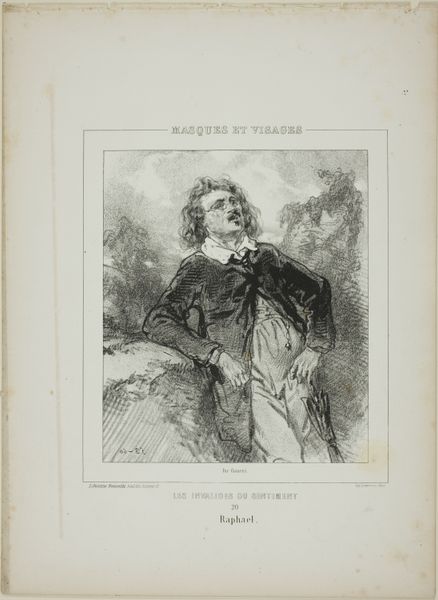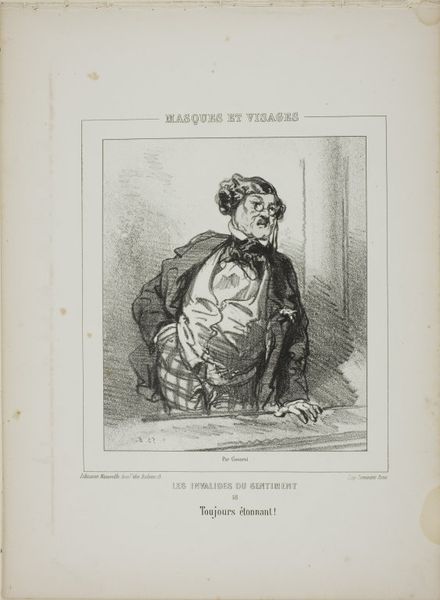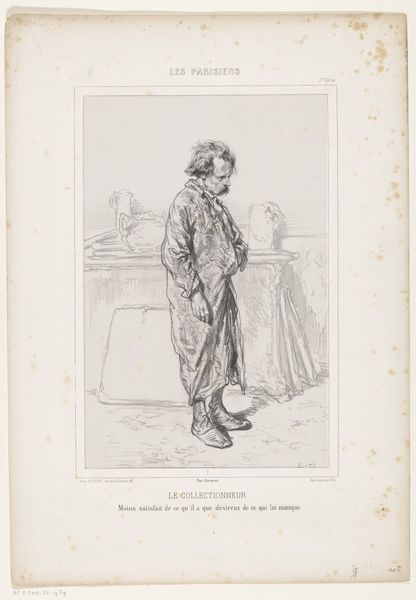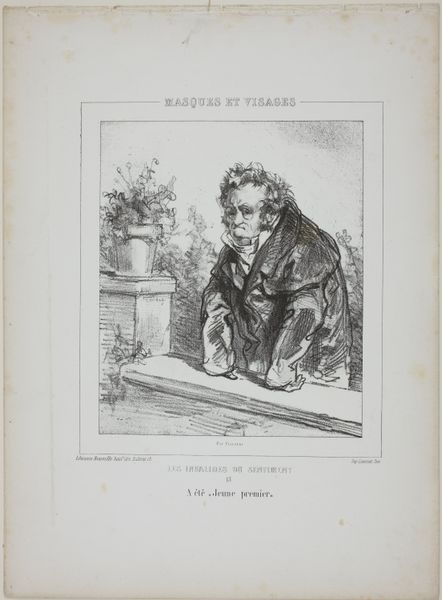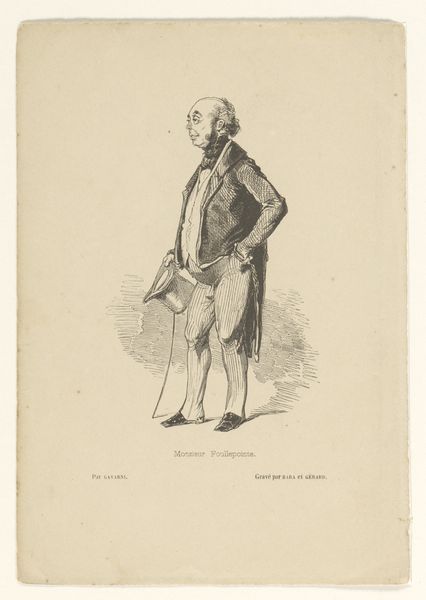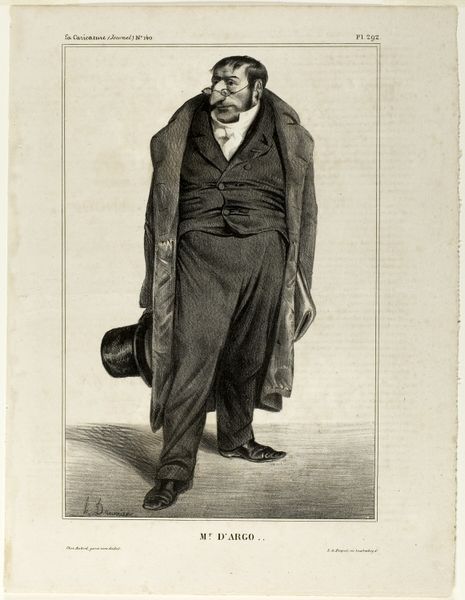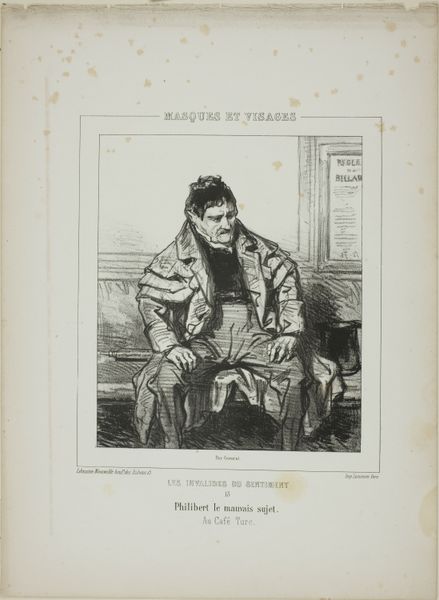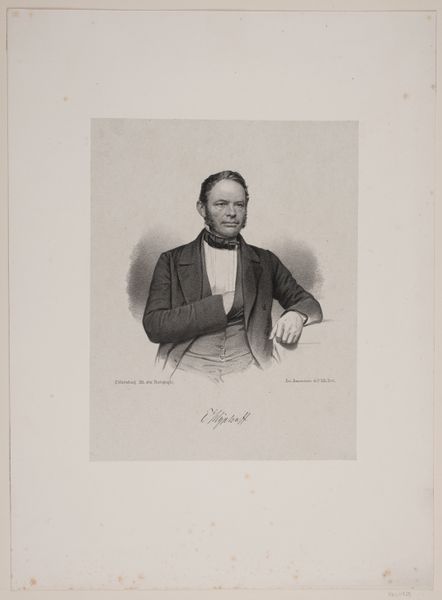
Copyright: Public domain
This lithograph was made by Paul Gavarni, likely sometime in the mid-19th century. Its grayscale rendering makes it tempting to skip over, but consider how the artist managed to create this image. Lithography is a printing process that relies on the contrast between oily and water-based substances. Gavarni would have drawn this image on a flat stone with a greasy crayon, then treated the stone so that ink would adhere only to the drawn areas. It’s a planographic process, meaning that unlike engraving or etching, the surface remains flat. The result is a relatively quick and efficient way to reproduce images. This was crucial in the burgeoning age of mass media, enabling the wide circulation of satirical works like this one. Gavarni, with his critical eye, was very much a man of his time. His choice of lithography reflects the changing landscape of art production, mirroring broader shifts in labor, politics, and consumption.
Comments
No comments
Be the first to comment and join the conversation on the ultimate creative platform.
